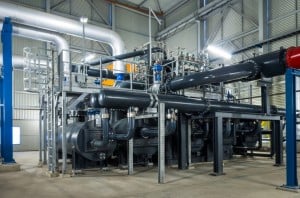In today’s competitive business environment, equipment such as pumps are often “maxed out” with 24-hour continuous heavy-duty operation. In addition, the operating conditions are less than ideal, causing equipment to degrade significantly. In an application such as a chemical plant, one pump ceasing operation can cause huge problems, causing loss of money and even threats to the safety of those in and around the plant.
 For example, one pump going down can cause a pharmaceutical company to lose an entire batch of expensive medications. It can also cause fires due to a combination of excessive heat and flammable chemicals. It is crucial to protect your pumps and ensure that they keep performing for you, day in and day out.
For example, one pump going down can cause a pharmaceutical company to lose an entire batch of expensive medications. It can also cause fires due to a combination of excessive heat and flammable chemicals. It is crucial to protect your pumps and ensure that they keep performing for you, day in and day out.
Adverse Conditions
Two of the most common adverse conditions which affect pump life are flow disturbances and wet/dry conditions. When a pump, which is self-cooled by the liquid it moves, is running but no liquid is flowing through it, a severe heat problem can develop, resulting in destroyed pump bearings or worse. Even if the pump isn’t damaged beyond repair, it is still expensive to fix the problem.
For most pumps to operate efficiently,the upstream flow profile must be stable before the liquid goes into the pump. If valves, elbows or other equipment are too close to the pump, it creates a distortion in the flow profile. This can result in cavitations, noise and decreased bearing life.
Wet/Dry Conditions
A flow or level switch can be installed in the process loop of the pump. This detects when the pump is about to run dry and sounds an alarm. They work for dry conditions as well as low flow conditions. The switch can detect and display the flow of the pump or the level of the pump liquid.
To learn more about durability, call 1300 922 973.
